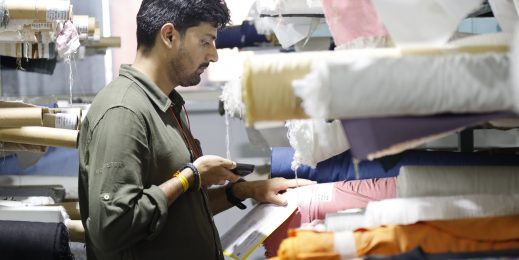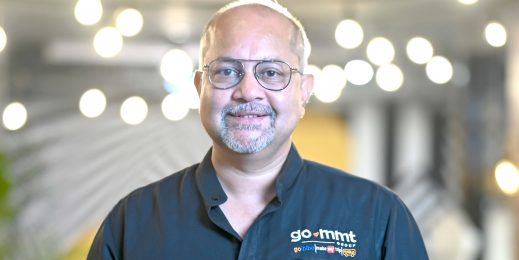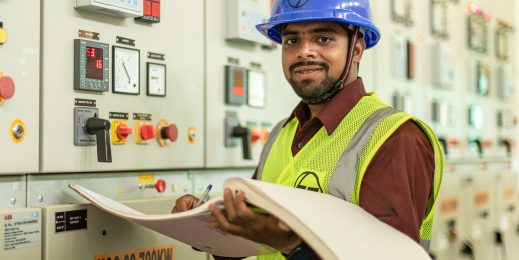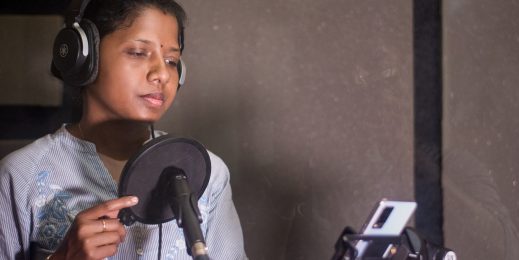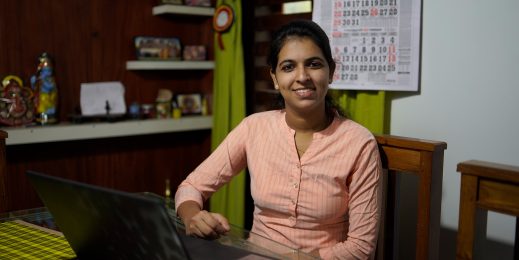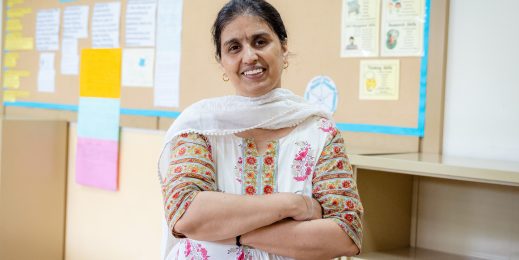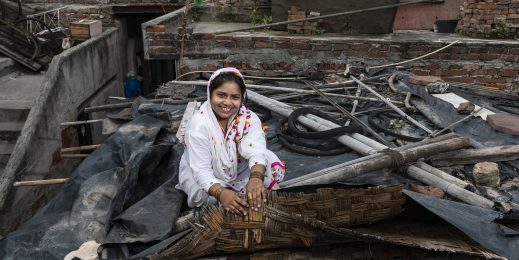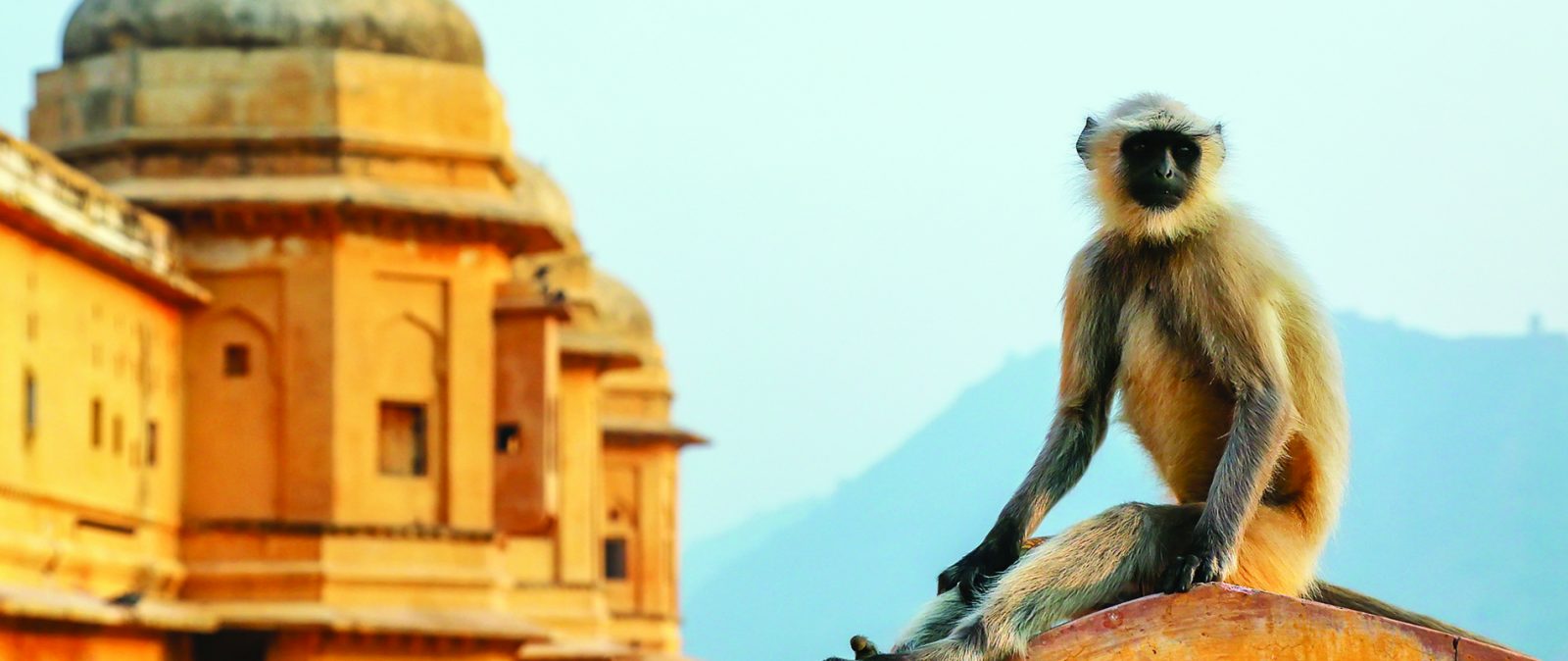
AI for Earth
Green warriors from India receive Microsoft AI for Earth grants to enable a sustainable future
From severe drought in Maharashtra to the devastating floods in Kerala. From blinding dust storms in New Delhi to the real possibility of Bengaluru running out of water in the next few years. Look around and no matter which part of the country you reside in, you’ll find that the effects of human activity on the climate, natural resources and biodiversity have spiralled into a pressing challenge that requires urgent action.
“Today, more than a quarter of the world’s 7.6 billion people post updates about their lives on social media at least once a month. This information is fed to algorithms that links people, products or services. Yet, when it comes to understanding the natural world, we are essentially flying blind,” says Lucas Joppa, Chief Environmental Officer, Microsoft.
Scientists worldwide are struggling to predict the immediate, short-term, and long-term challenges of climate change because either they don’t have the necessary data or in cases where they do have the data, they don’t have powerful algorithms to convert it into actionable insights.
“One of the biggest ironies in today’s time is that we often ask those with the least to do the most. And, those can be underfunded non-profits or university departments or government agencies that represent the environment and are consistently short changed on budgets,” adds Joppa.
Through AI for Earth, Microsoft is democratizing access to AI for everyone who wants to contribute to protecting the planet’s natural resources in the four key areas of climate change, agriculture, biodiversity, and water, to enable a more sustainable future. The $50 million, five-year program provides access to cloud and AI tools, opportunities for education and training on AI, mentorship and investments in innovative, scalable solutions.
Over the past year, AI for Earth has helped over 147 sustainability projects in more than 45 countries. Of the 16 grant recipients in Asia, nearly half are from India. Non-profits, research organizations, and communities from across the nation have stepped up to create innovative solutions for some of the most lingering environmental issues. We introduce you to the green warriors from India who’ve received the AI for Earth grant this year:
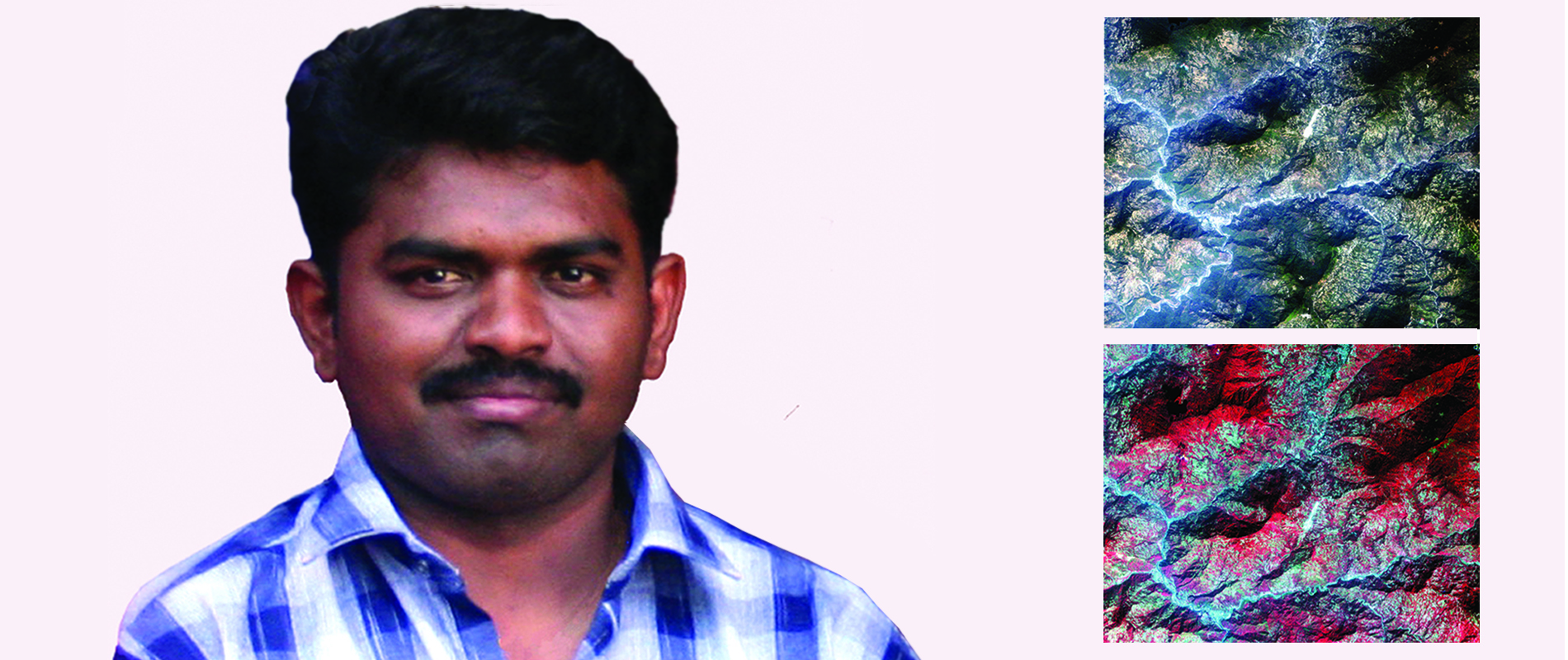
Protecting the unique, biodiversity-rich region of Northeast India
From the Hoolock Gibbon to the Phayre’s Leaf Monkey, India’s northeast region is home to some of rarest flora and fauna in the world. Little is documented about this biodiversity-rich region, which hinders any conservation effort. Now, a team of scientists from Bengaluru’s Ashoka Trust for Research in Ecology and Environment (ATREE) wants to change that with AI.
With a PhD in the field of urban forest carbon stock estimation, Dr. Muneeswaran Mariappan, is working alongside a group of field researchers at ATREE’s Ecoinformatics Lab. The lab is a geospatial research organization dedicated to biodiversity conservation and sustainable development. Armed with detailed satellite images of the region and the AI for Earth grant, the team believes AI-enabled tools will help them collect, document, and analyze bioresources data that has never been captured before.
Dr. Mariappan believes the tough terrain of the region has prevented cataloging of this data thus far. The data is limited because much of it is collected and analyzed manually. “Machine learning and computer vision can boost our efforts to map and catalog the unique, resource-rich ecosystem of northeast India,” he says.
You can’t save an ecosystem if you don’t fully understand it. That’s where our data along with Microsoft’s AI resources can help.
With a trained AI algorithm, the team hopes to classify the urban and rural areas, identify forest cover, river beds and other water bodies from satellite images, and create a precise grid map for the region. The team hopes to apply computer vision to create a comprehensive database of biodiversity in the region to help policymakers and local communities make better-informed economic, ecological, and infrastructure-related decisions.
“You can’t save an ecosystem if you don’t fully understand it,” exclaims Dr. Mariappan. “That’s where our data along with Microsoft’s AI resources can help.”
Tracking the monkey population in urban areas using AI-powered image recognition
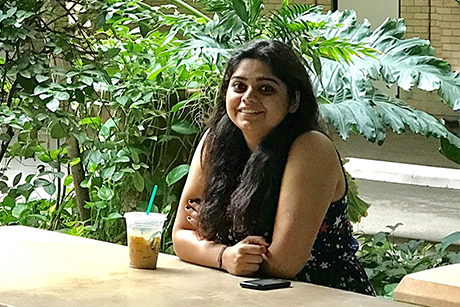 The monkey population in urban India has spiraled out of control in recent years. India’s capital city, New Delhi, alone reports at least five cases of monkey bites daily that can cause rabies and be fatal. It is estimated that 7,000 monkeys prowl the streets of the capital, damaging public property and attacking people. With their natural habitat shrinking owing to urbanization, authorities are struggling to avoid monkey attacks.
The monkey population in urban India has spiraled out of control in recent years. India’s capital city, New Delhi, alone reports at least five cases of monkey bites daily that can cause rabies and be fatal. It is estimated that 7,000 monkeys prowl the streets of the capital, damaging public property and attacking people. With their natural habitat shrinking owing to urbanization, authorities are struggling to avoid monkey attacks.
Managing the growth of the population is critical. To this end, sterilization or birth control pills offer a plausible solution. Current approaches resort to invasive methods like tattooing a code or embedding a microchip in the monkeys to identify sterilized monkeys. Ankita Shukla, a PhD student at Indraprastha Institute of Information Technology Delhi (IIIT Delhi), along with Research Associate Gullal Singh Cheema aim to develop a non-invasive alternative for identifying and tracking monkeys as it is safer and less stressful for the animals, as well as humans.
Shukla, a native of a small town near Lucknow, has been working with deep learning and machine learning tools for computer vision applications. On the other hand, Cheema has been leveraging these tools for applications like object detection and recognition. Their team at IIIT Delhi along with Wildlife Institute of India want to combine the experience in machine learning with wildlife monitoring to create a tangible solution for the simian problem in cities.
Their team is creating an AI-enabled app that can help the community to tag monkeys in photographs and upload it to a cloud where authorities can track the simian population’s growth, vaccination history, and movements. “With such a population monitoring tool, we can deploy contraceptives more efficiently,” she says. “Training a deep neural network for unique identification of monkeys and whether it’s already been sterilized could go a long way towards solving this crisis,” Shukla adds.
Having teamed up with Saket Anand, a professor at IIIT Delhi, she pitched the idea to the AI for Earth panel earlier this year. The team plans to leverage the Microsoft Azure platform for the processing power required to train the AI model.
“The Microsoft resources and technical assistance helped us develop a genuinely useful app,” says Shukla. “We’re now trying to take things to the next level so that we can find a solution to the monkey menace in a scientific and humane manner.”

Reducing energy loss and carbon emissions through smart meter data analytics
Across India, local utility companies send out employees to read home meters and collect consumption data in order to generate monthly electricity bills. Archana Chaudhari believes smart meters with a machine learning layer on top will not only allow utility companies to monitor energy usage in real-time, but also streamline the process of energy distribution and cut carbon emissions. She wants to combine smart meters, cloud storage, and algorithmic data analysis to unlock efficiency in the national energy grid.
Chaudhari’s technical background combined with a passion for energy efficiency has driven this pursuit. With a bachelor’s degree in computer science and a master’s degree in engineering, she endeavors to address the issue of energy wastage on the national grid. As part of her PhD, she’s taken on a project with the guidance of Dr. Preeti Mulay, Associate Professor, Symbiosis Institute of Technology, to deploy smart meter data analytics across metropolitan cities in India.
“Data analytics on energy usage helps utilities decide when to ramp up or wind down energy production so that people can use electricity as efficiently as possible. The cumulative effect on carbon emissions is enormous,” says Chaudhari.
Chaudhari modified the algorithms used to analyse the pattern of energy consumption and predict demand. “With our predictive analytics, energy generators can make precise decisions about commissioning more solar panels or reducing the number of coal generators in their portfolio,” she says.
She received the AI for Earth grant funding earlier this year and is currently working with a utility in Kalwa, Thane, a metropolitan region on the outskirts of Mumbai, and a Pune-based NGO, Prayas Energy Group, to collect data and improve the algorithm. Their findings will be published in two journals before the solution is deployed at the end of the year.

Enabling equitable distribution of water in large cities through AI
Dr. Yogesh Simhann, an Assistant Professor at the Department of Computational and Data Sciences at the India Institute of Science, Bengaluru, is passionate about scaling emerging, cutting-edge technologies to solve real world problems. With a PhD in Computer Science from Indiana University in Bloomington, he spent 13 years in the US and wanted to return to India to make an impact.
“The problems I can contribute to solving here in India are very different from those in the developed world,” he says almost matter-of-factly.
When the ‘100 smart cities’ project kicked off in 2013-14, it was an opportunity for him to leverage his social and technical experience working with the largest public utility in the US. While working as a research faculty at the University of Southern California, Dr. Simhann helped the Los Angeles utility board upgrade from a power grid to a smart grid by deploying smart meters in the region. The project helped him gain the skills needed to leverage a nascent technology on a megacity scale. This was also his first brush with the power of the Internet of Things (IoT).
The problems I can contribute to solving here in India are very different from those in the developed world.
Dr. Simhann is now part of the EqWater project, which seeks to deploy IoT, machine learning, predictive analytics, and big data to make water distribution fair and efficient in major Indian cities. The team is led by Principal Investigator Mohan Kumar, a hydrologist and water engineer.
Equitable distribution of Bengaluru’s limited water supply was the team’s first challenge. A majority of the water the city receives comes from the Cauvery River. This fixed supply is distributed through a network of pumps, valves, and overhead tanks across the city. Areas on a higher elevation often receive an inadequate supply due to the limitations of legacy infrastructure and a lack of planning.
The team partnered with the Bangalore Water Supply Sewerage Board (BWSSB) to get data from the sensors in the water distribution network to work out a geospatial map of water flow through southern Bengaluru. Combining this data with monthly water bills from consumers, demographic data from the census, and water level readings from reservoirs at the outskirts of the city, the team created a model to predict peak demand at different times and consequent gaps in the supply chain.
“We were fortunate to have real-time data from the IoT-enabled sensors the BWSSB had already deployed,” says Dr. Simhann. “However, we needed considerably more computing power to crunch the numbers and surface key insights. Scalability and sophisticated analytics were the immediate challenge, which is why Microsoft Azure’s cloud and machine learning resources from the grant were a major boost to the project.”
Dr. Simhann’s team has run simulations on Microsoft Azure to predict the flow of water, draw correlations between different data points (such as the Gini coefficient and water usage), and create a real-time map of the supply chain. This, they hope, will make policymaking more data-driven and help local civic authorities like the water board to manage water buffers in the form of overhead tanks with more precision. Later this year the team will meet with city policymakers to make recommendations for infrastructure spending, sensor installations, and interventions.
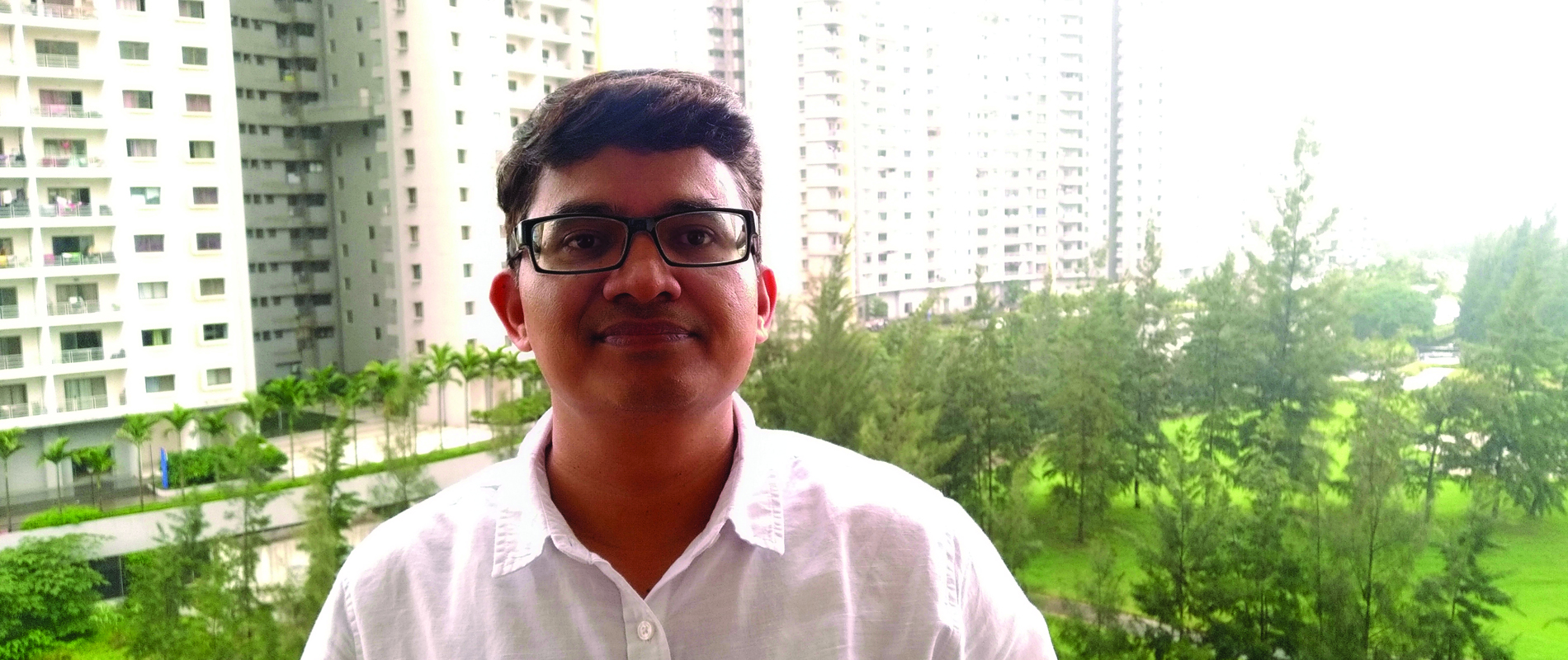
Leaning back in his chair at the RMIT University in Melbourne, Australia, Dr. Himanshu Agarwal was deeply concerned by what he was reading. The World Health Organization (WHO) report on water pollution said India was at high risk of an eventual drinking water crisis. Dr. Agarwal reached out to a fellow PhD student to get some background on this issue. “We just don’t have enough real-time public data to tackle the problem,” said his colleague over the phone.
After years of working on his PhD thesis on internet traffic routing through dense networks and network optimization, Dr. Agarwal was convinced his skills could be applied to the water crisis back home. When he returned to India in 2011, he decided to join Symbiosis Institute of Technology, Pune as an Associate Professor of Computer Science. His experience in mentoring students studying Internet of Things (IoT) applications eventually led to the Smart Environment Information and Management System (SEIMANS) project.
Backed by a multidisciplinary team at the institute, SEIMANS is a network of IoT-enabled water sensors and machine learning algorithms that monitor the purity of urban water, air, and soil. It’s a comprehensive system that can accurately track pH levels, soil contaminants, and microparticles in the air.
Creating a real-time water index on Azure and publishing it in the public domain will help residents know if their water is safe to drink. It should also push policymakers to invest more in water treatment and pollution reduction infrastructure.
Earlier this year, the team applied for the AI for Earth grant to start studying their local river. “The funds and resources from this grant would help us deploy a civil engineering PhD student to study the reservoir and river that supplies drinking water to Pune,” says Dr. Agarwal. “Creating a real-time water index on Azure and publishing it in the public domain will help residents know if their water is safe to drink. It should also push policymakers to invest more in water treatment and pollution reduction infrastructure.”
The SEIMANS project is currently in the data collection phase. The team hopes that the funds and resources from the grant will help them delve deeper and publish more parameters such as water pollutants, dissolved oxygen level, nitrate and fluoride content. “This local experiment will create a framework of sensor deployment, cloud storage, machine learning, and real-time monitoring on Microsoft Azure that can help make our cities truly ‘smart’ in the future,” says Dr. Agarwal.
Predicting pest attacks for farmers with AI
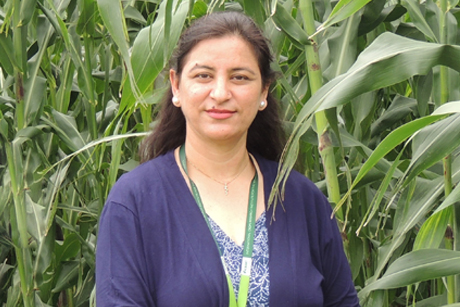 According to a study by the Associated Chambers of Commerce and Industry of India (ASSOCHAM), annual crop losses due to pests and diseases amount to $500 billion. Farmers need a sustainable and reliable way to prevent infestations to protect their crops. Existing tools don’t combine weather conditions with pest control which is a key reason they have been ineffective, because weather and pest growth are intrinsically linked. Weather-based pest forecasting can help implement pesticides efficiently, protect crops, improve crop yields and incomes for farmers.
According to a study by the Associated Chambers of Commerce and Industry of India (ASSOCHAM), annual crop losses due to pests and diseases amount to $500 billion. Farmers need a sustainable and reliable way to prevent infestations to protect their crops. Existing tools don’t combine weather conditions with pest control which is a key reason they have been ineffective, because weather and pest growth are intrinsically linked. Weather-based pest forecasting can help implement pesticides efficiently, protect crops, improve crop yields and incomes for farmers.
“Nearly all the farmers I’ve met have an internet-enabled smartphone now. With Microsoft’s cloud storage and predictive analytics tools, we can help these farmers pre-empt pest attacks and preserve their farms,” says Dr. Mamta Sharma from the International Crops Research Institute for Semi-Arid Topics (ICRISAT).
Our project is a combination of better surveillance powered by satellite images, better forecasts powered by machine learning, and a robust decision-support system for farmers through a cloud-enabled app. This wouldn’t have been possible without Microsoft’s cutting-edge resources in AI.
Dr. Sharma applied for a grant to tap into Microsoft Azure resources to predict weather conditions and pest migration patterns. The project builds on ICRISAT’s extensive work with farmers. Earlier, the organization developed a Sowing App to help farmers achieve optimal harvests by advising them on the best time to sow depending on weather conditions, soil and other indicators.
The team is working with 30 years of pest and disease occurrence data and is confident that the latest machine learning tools can help predict the weather more accurately. They plan to create a real-time, geospatial map of the pests that may endanger crops in a certain region. This data combined with weather forecasts can give precise predictions of pest infestation. Uploading this data to the cloud and making it available to small farmers will help them make data-driven decisions about when to harvest their crops and how to diagnose rare crop diseases.
“Our project is a combination of better surveillance powered by satellite images, better forecasts powered by machine learning, and a robust decision-support system for farmers through a cloud-enabled app,” Dr. Sharma explains. “This wouldn’t have been possible without Microsoft’s cutting-edge resources in AI.”
The app will initially have a limited release in certain hotspots selected based on economic losses from pests. Eventually, the team hopes to roll it out nationwide and add more parameters, disease information, and pest surveillance features.
“AI for Earth has helped us fill the gaps in our digital toolkit. Computing resources and technical support go a long way towards our mission to empower Indian farmers protect their crops and avoid losses through smart decision-making,” says Dr. Sharma.






